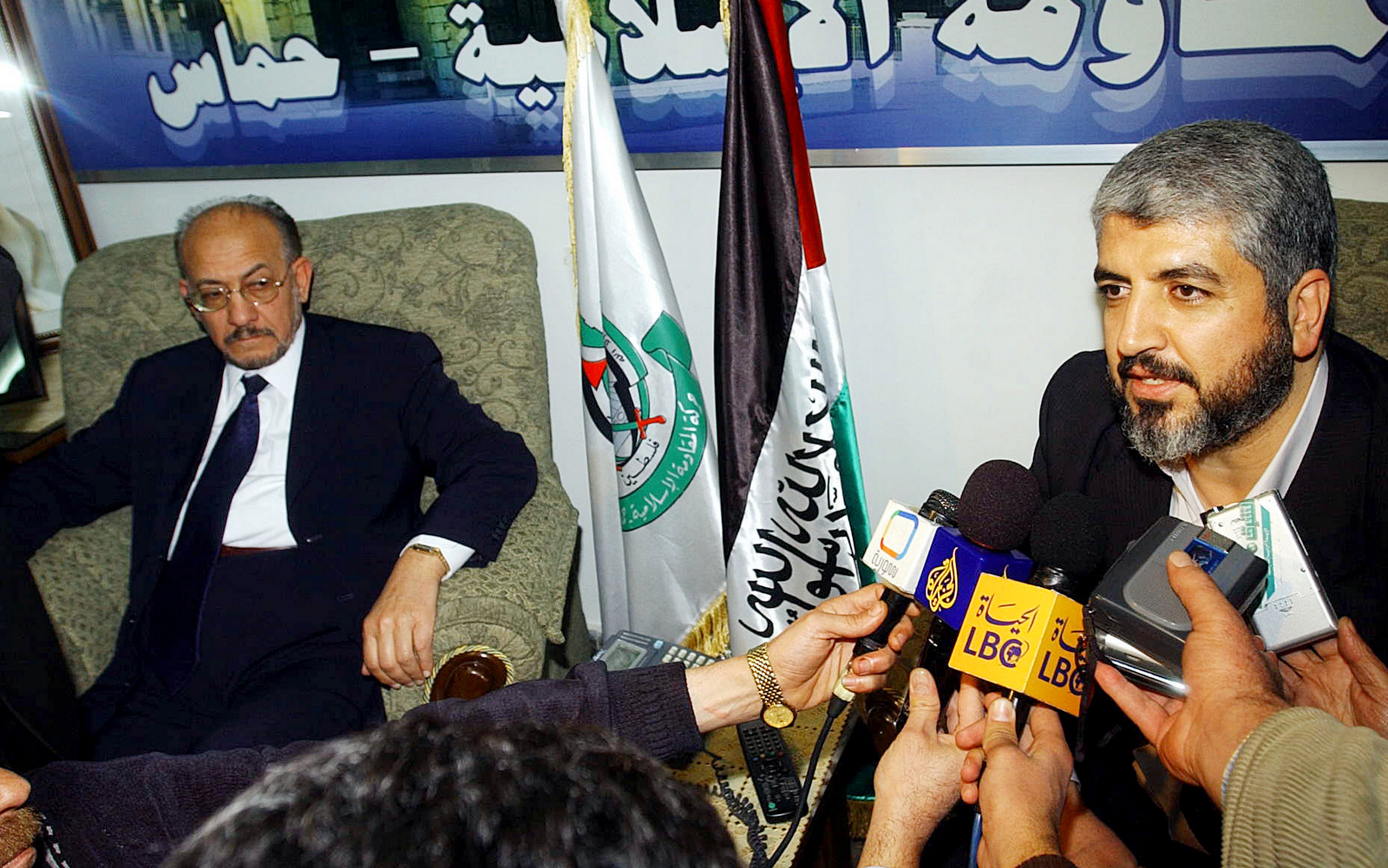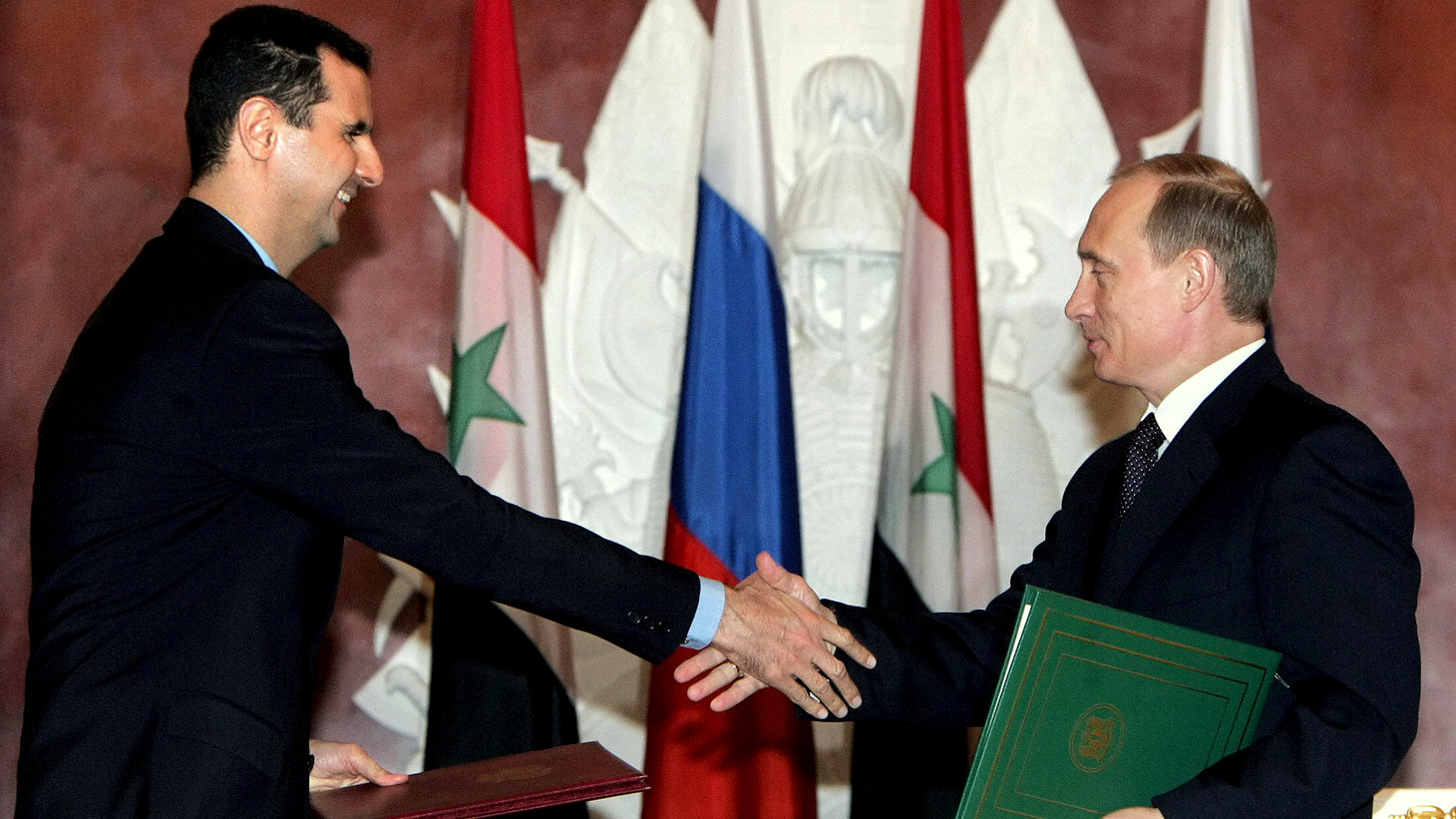
Anti-Assad
protesters burn a picture of Syrian President Bashar al-Assad with
‘Corruption’ written across his face.
In 2010, Wikileaks published hundreds of thousands of classified State Department cables, including a 2006 cable showing that destabilizing the Syrian government was a primary goal of U.S. policy in the Middle East. The ultimate intention was to topple Iran, one of Syria’s closest allies. The cable revealed that the U.S.’ goal at the time was to undermine the Syrian government by any means available.
In addition, retired United States Army General Wesley Clark’s bombshell interview with Democracy Now exposed the existence of plans for regime change in Syria that date as far back as 2001. Now, a newly declassified document from the Central Intelligence Agency has shown that these regime change efforts date back even further to the late 1980s – and potentially even earlier.
The declassified document was written in July, 1986 by the Foreign Subversion and Instability Center, a part of the CIA’s Mission Center for Global Issues, and is titled “Syria: Scenarios of Dramatic Political Change.” As the document itself states, its purpose is to analyze – in a “purposely provocative” manner – “a number of possible scenarios that could lead to the ouster of President Assad [Bashar al-Assad’s father, Hafez] or other dramatic change in Syria.”
The report’s meager distribution list suggest it was considered by top officials in the Reagan administration, specifically because it was distributed to national security chiefs, not entire agencies. It was also distributed to a handful of key players in U.S.-Syria relations, such as former Ambassador to Syria William Eagleton.
Though the document itself officially predates the current Syrian conflict by nearly 25 years, much of its analysis brings to mind recent events in Syria, particularly those that led to the outbreak of war in 2011. Chief among these is the rise of factionalism between Sunni Muslim elements against the ruling Alawi minority (a Shi’ite sect), as well as the potential to counter Russian influence in Syria and elsewhere in the Middle East. These similarities suggest that U.S. regime change efforts in Syria date back to well over 30 years ago – proof of the persistent imperialist elements that consistently guide U.S. foreign policy.
The Rise of Factionalism and Sectarian Conflict in Syria

A
Free Syrian Army fighter from the Al-Faruk brigade steps on a portrait
of Syrian President Bashar Assad, Sept. 22, 2012
At the time, the document continues, Sunnis “made up 60 percent of the Syrian officer corps but [were] concentrated in junior officer ranks,” with the majority of enlisted men being primarily Sunni conscripts. Furthermore, the document notes that if the Syrian government were to overreact to “minor outbreaks of Sunni dissidence,” large-scale unrest could be triggered – “setting the stage for civil war.”
The CIA also makes its strong preference for a Sunni-led government in Syria quite clear, stating that “U.S. interests in Syria probably would be best served by a Sunni regime,” particularly one led by Sunni “business-moderates” who would “see a strong need for Western aid and investment.”
This assessment, as the Libertarian Institute has pointed out, is “remarkably consistent” with more recent events, particularly those that have defined Syria’s current conflict, which is often misleadingly described by many media outlets as a “civil war.” For instance, opposition forces who have been fighting to overthrow the Assad regime for the better part of seven years are almost entirely composed of Sunnis.
According to the Combating Terrorism Center at West Point, “the Syrian opposition, especially its armed current, is a Sunni enterprise.” Sunni factionalism, the CTC further notes, is “driving large segments of the opposition to the [Assad] regime.” In 2014, the Guardian noted that the opposition forces were “almost exclusively Sunni.”

Pro-Syrian
government demonstrators hold Baath party flags and a picture of
President Bashar Assad at a rally at Sabe Bahrat Square to commemorate
the 65th anniversary of the foundation of the Ruling Baath Arab
Socialist Party in Damascus, Syria, Saturday, April 7, 2012.
The document also notes that factionalism among the Alawis could also be a destabilizing force in the country. It says the Alawi-dominated Syrian military could play a role in Assad’s ouster, stating that the Syrian “military’s strong tradition of coup plotting – dormant since Assad took control in 1970 – could re-assert itself.” Military discontent, the CIA asserts, could arise if Assad were to suffer a major defeat at the hands of Israel, particularly if Assad attempted to reclaim the Syrian Golan Heights.
Syria and Israel have been in a continuous state of conflict since 1967, when Israel first occupied the Golan Heights during the Six-Day War. In addition, the CIA notes the potential for in-fighting among the Alawi elite, particularly over Hafez al-Assad’s brother Rifaat – a controversial figure in Syrian politics.
These conflicts within the Alawite ruling class were mentioned extensively in a 2006 State Department cable, where “some long-standing vulnerabilities and looming issues that may provide opportunities to up the pressure on Bashar and his inner circle” were discussed at length.
Some intra-elite conflicts among the Alawis mentioned in the 1986 document are also explicitly mentioned in the 2006 cable, such as the numerous controversies surrounding Bashar al-Assad’s uncle, Rifaat al-Assad. However, despite likely attempts to exploit these vulnerabilities in the current conflict, the rise of Sunni opposition forces has kept the Alawi faction largely united out of necessity – particularly as the Alawis have been forced to face down an old foe, the Muslim Brotherhood.
The Muslim Brotherhood and U.S.-Backed Regime Change

Highly
ranking Muslim Brotherhood official Abdul-Majeed Zneibat, left, listens
as Hamas leader Khaled Mashaal, right, talks to reporters in Damascus,
Tuesday Jan, 31, 2006 .
Several countries, such as Saudi Arabia, Russia, Syria, and the U.A.E., now classify the Brotherhood as a terrorist group. Despite its widespread recognition as such, the CIA’s relationship with the Brotherhood, which dates back to the 1950s, continues into the present.
In the CIA’s 1986 report, the Muslim Brotherhood is explicitly identified as having the strongest capacity for leading any Sunni opposition against the Alawis and its associated Ba’ath political party. The report notes that “the Brotherhood’s role was to exploit and orchestrate opposition activity by other organized groups […] These groups still exist, and under proper leadership they could coalesce into a large movement.” Later on, it notes that “remnants of the Muslim Brotherhood – some returning from exile in Iraq – could provide a core of leadership” for a potential Sunni dissident movement.
Also interesting is the fact that the 1986 document mentions the Brotherhood as being part of a long-term future scenario, as the crushing of a Brotherhood-led revolt in the early 1980s led most of its Syrian members to be exiled or forced underground. Nearly three decades later, it should come as no surprise that the Brotherhood has held a leading role in the creation and militarization of the Syrian opposition throughout the current conflict.
When the Syrian opposition began to militarize in 2011 after receiving arms from the CIA and other NATO-allied intelligence agencies, the Syrian National Council emerged as the face of what was essentially Western-backed “rebel” forces working to overthrow Assad. The Carnegie Middle East Center, in its article on the Brotherhood, stated that it was “the most influential Islamist component within the council.” From 2011 to 2015, the CIA funneled over $1 billion per year training and arming opposition “rebels” in Syria. The program still continues, though it was reduced by 20% in 2015.
In 2012, when the Supreme Military Command of the opposition was established in Syria, Reuters noted that the Muslim Brotherhood dominated its leadership: “The unified command includes many with ties to the Muslim Brotherhood and to Salafists … it excludes the most senior officers who have defected from Assad’s military.” The decision to give the Brotherhood a major role in the command was realized at talks attended by security officials from the U.S., UK, France, the Gulf Monarchies and Jordan.
Also in 2012, Brotherhood spokesperson Mahmoud Ghozlan called on “Arab, Islamic and international governments” to intervene in Syria “to bring down the [Assad] regime. “The Carnegie Middle East Center said “since the beginning of the revolution, the Brotherhood has maintained that foreign intervention is the only possible solution to the crisis in Syria,” suggesting that the Brotherhood is actively seeking foreign military intervention to oust Assad, a goal it shares in common with the CIA.
Incidentally, 2012 also saw direct cooperation between the Brotherhood and the CIA. The New York Times reported:
“CIA officers are operating secretly in Southern Turkey helping allies decide which Syrian opposition fighters across the border will receive arms…by way of a shadowy network of intermediaries including Syria’s Muslim Brotherhood.”
This, of course, allowed the Brotherhood to choose which of Syria’s many rebel groups to arm, likely favoring Islamist counterparts who were ideologically similar to the Brotherhood.
But despite the fact that the Syrian opposition is chiefly composed of fundamentalist Sunnis and has elements of the Muslim Brotherhood in key leadership roles, the expected consequences of fomenting Sunni dissent against the Assads have not gone exactly as the 1986 report anticipated.
For instance, key segments of Syria’s Sunni majority have remained supportive of Assad, particularly middle and upper-class Sunnis, as well as the Sunni business and merchant classes. In addition, many Sunnis – from the U.S. military’s perspective – likely feel more threatened by the armed opposition than the Assad regime, despite any misgivings they may have with the current ruling party. Sunnis have also been well-represented in pro-government militias, such as the National Defense Force.
Countering Russia through Syria

In
this Jan. 25, 2005 file photo, Syrian President Bashar Assad, left, and
Russian President Vladimir Putin shake hands during a signing ceremony
in the Kremlin, Moscow.
The report also explicitly mentions several key points regarding Russia and Syria’s strategic relationship, saying the “continuation of Alawi dominance would be most beneficial to Soviet interests,” adding that “if the Sunnis gained power, Moscow’s position would be weaker.”
Also mentioned was the fact that almost all of Syria’s arms come from Moscow and Eastern Europe and that “the Soviets deliver more weapons to Syria than to any third world client.” This “vested interest in major policy shifts or changes in Syrian leadership” would prompt Russia to intervene in Syria, the report added.
Of course, Russia – once Assad’s regime was under threat from opposition forces – did intervene to protect its interests in Syria. Starting an aerial bombing campaign against “moderate” and terrorist-linked rebels in 2015, Russia soon became a central part of the conflict and Assad’s greatest ally in his fight to retain power. Incidentally, Russia’s role in Syria has become the launching pad for U.S. obsession with Russian “interference” and “aggression” in recent years, which has led the U.S. and Russia to have their worst diplomatic relations since the height of the Cold War.
The CIA has been very eager to foment domestic anti-Russian hysteria. The mention of Moscow in the 1986 report on Syria suggests that the current U.S.-led effort to destabilize Bashar al-Assad’s regime is at least partially motivated by its long-standing goal of isolating Russia and mitigating its influence internationally.
Looking Beyond Syria

CIA backed Syrian rebels attend a training session in Maaret Ikhwan near Idlib, Syria.
The fact that the CIA has a center dedicated to “foreign subversion and instability” – as well as the CIA’s documented penchant for regime change – confirms that the decades-long effort to destabilize Syria parallels the agency’s efforts to destabilize other regimes throughout the world in order to replace them with governments they believe to be more sympathetic to U.S. interests.
These destabilization efforts are often carried out with little, if any, regard to their impact on civilians who are often caught in the crossfire. As the 1986 report and the 2006 cable both note, the Assads brought periods of “unprecedented stability” to Syria.
The CIA and U.S. government have nevertheless chosen to pursue an agenda of destabilization. Nearly seven years later, the death toll in the West’s efforts to oust Assad is set to top half a million and has helped to create the largest refugee crisis since World War II.
Source